Pop-up card of the former Tsuruga Town Office
I made a pop-up card of the former Tsuruga Town Office.
The building on which the card was modeled was built in 1933 by local businessman Shoshichi Ohwada (2nd generation), and he donated it to the town.
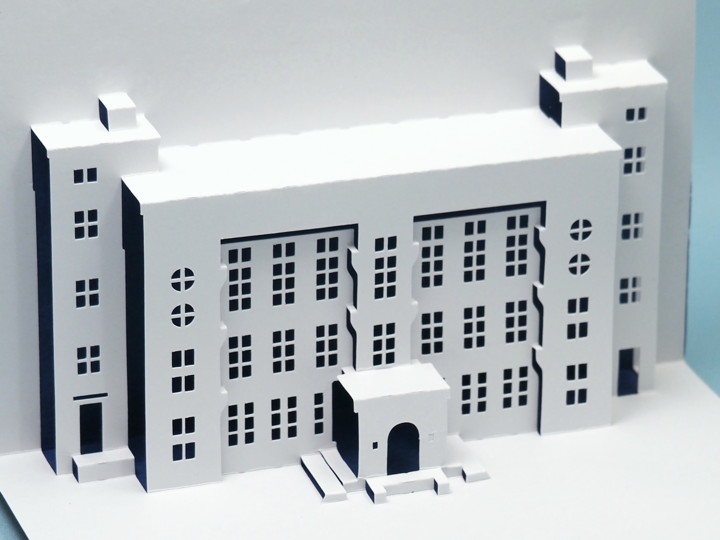
Owada Shoshichi (1857-1947) was the adopted son of the shipping business Ohwada family and assumed the name Shoshichi Ohwada II, who also established the Ohwada Bank, and was instrumental in the designation of Tsuruga Port as an international trading port and in port development.
When this building was built in 1933, the town was known as Tsuruga Town, but in 1937 Tsuruga Town and Matsubara Village merged to form Tsuruga City, and the town office was renamed City Office.
Some photos of the former Tsuruga Town Office can be found on the internet, but photos and drawings of the building were published in “The Great Man in Hokuriku, Mr. Ohwada, Revised and Expanded Edition" (by Shinzaburo Nakayasu / Hinode Newspaper Company, Jigyokudo / 1934), which is cited here.
(The book’s protection period has expired, so we can view in the Digital Collections of the National Diet Library without login.)
This is the exterior of Tsuruga Town Office.
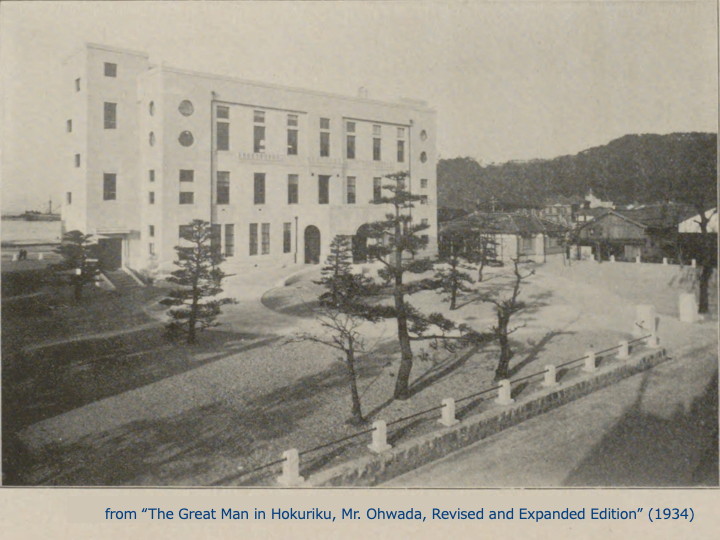
Shoshichi Ohwada invested about 180,000 yen (other book in post-war says 250,000 yen) in construction and donated a reinforced concrete town office building, which also served as a public hall, to the town. The original plan was for the building to be completed in February 1934, but in October 1933, when a special army exercise was to be held in Fukui Prefecture, it was decided that the Emperor would visit Tsuruga after the exercise. The construction was brought forward in time for the Emperor’s visit. The town hall was used as a resting and lunch place for the Emperor.
The building was designed by Kyozo Nagase and built by Shimizu- gumi, with construction commencing on 10 April 1933 and completed on 24 October.
The drawings of the building are also quoted below.
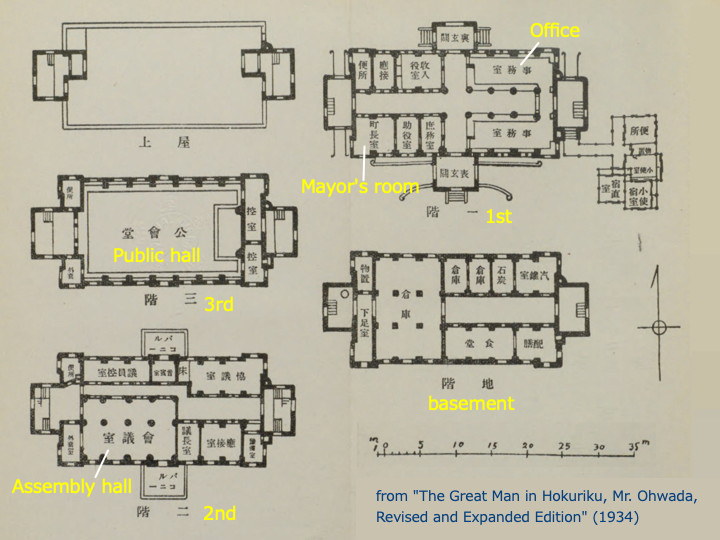
Although I omitted from the pop-up card, there appears to have been a connecting corridor leading from the doorway on the right to the night keeper’s room and toilet.
On the ground floor, there was the mayor’s office and the town office, while on the second floor there was a meeting room for the town council.
On the third floor, a public hall was set up.
The building had an area of 626.64 square meters and a total floor area of 2098.14 square meters.
The height was 16.5 m at the front part and 18.3 m including the tower house.
An aerial photograph in 1948 is available from the GSI’s Map and Aerial Photo Viewing Service, showing the area around Tsuruga City Office as it looked at the time. We can see the city office in the center.
Tsuruga’s urban area was damaged in an air raid on 12 July 1945, but the city office escaped damage.
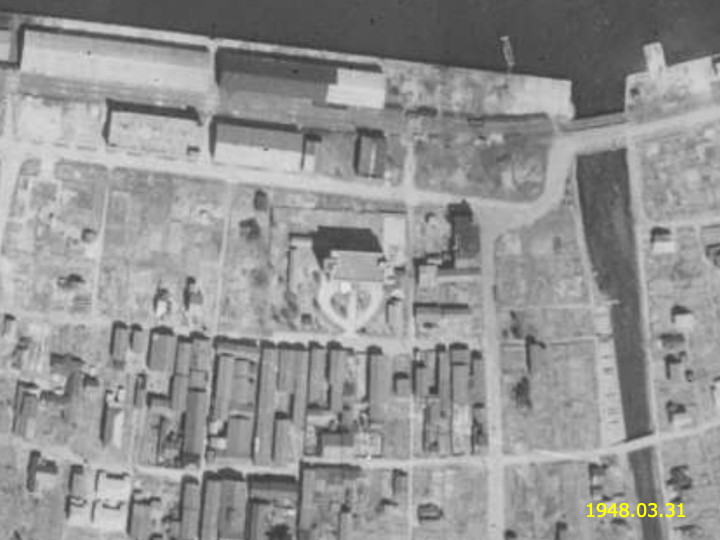
About Tsuruga City Office after the war, in 1974 a new city office was built elsewhere (completed on 27 November), so the city office was relocated and this building was subsequently demolished. The Tsuruga Citizen Culture Center was built on the site in 1976.
Another aerial photograph is shown. This one was taken in September 1975, which means that it shows the old city office building, which is vacant, waiting to be demolished.
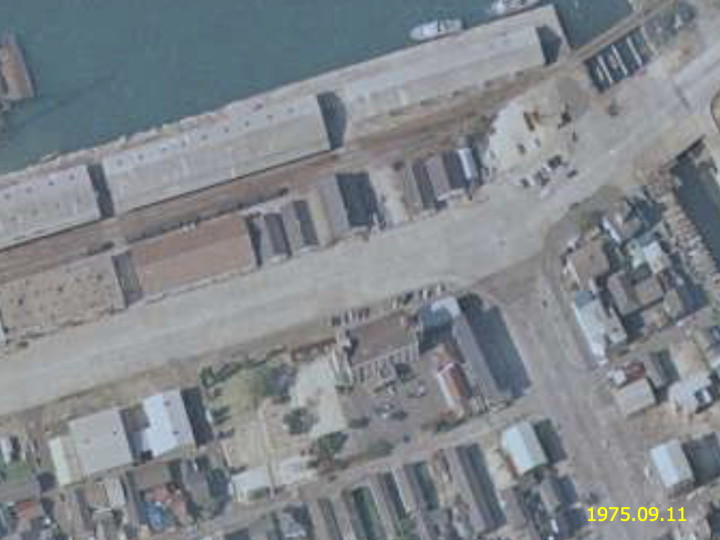
By the way the city office that was built in 1974, but in fact it no longer exists.
Tsuruga City decided to rebuild the city office in 2017. The way to do this is to build a new city office next to the then city office and then demolish the old one.
The new town office was completed in 2021 and put into use in January 2022. The old town hall was demolished in 2022.
I will show a photo of another town office building.
This is the old Tsuruga Town Office, built in the Meiji era. It was built in 1874 or 1875 using materials from the old county office.
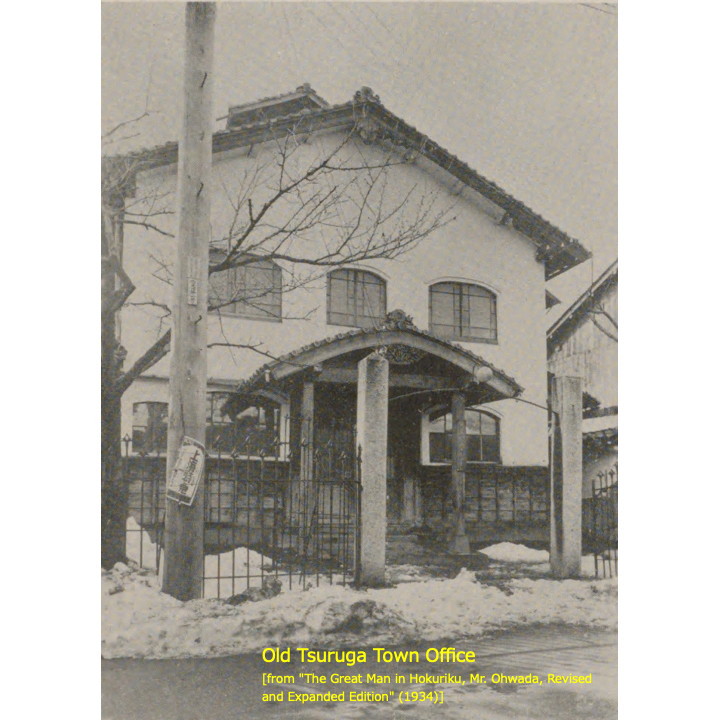
If I count this building as the first generation, including the town office days, then the current city office is already the fourth (the third as a 'city’ office). And I was stunned to find that the third had already been demolished when I made the pop-up card for the second town office.
I started my website in 2001 and started uploading pop-up cards in 2002. At the time, I was focusing on “buildings from the Meiji era to 1945" and, to be honest, I was not very interested in post-war buildings.
However, over 20 years later, even post-war buildings are already being demolished. Architectural experts are only interested in buildings designed by famous architects, and many buildings are quietly disappearing.
Personally, I don’t think we should force ourselves to keep any buildings, but I think it would be bad if we don’t leave a record and memory of local public buildings somewhere.
For this reason, I have recently decided to include post-war buildings in my work. With post-war buildings also disappearing rapidly, I can no longer say that I am only interested in pre-war architecture.
I will continue to make artworks using buildings that interest me as models.
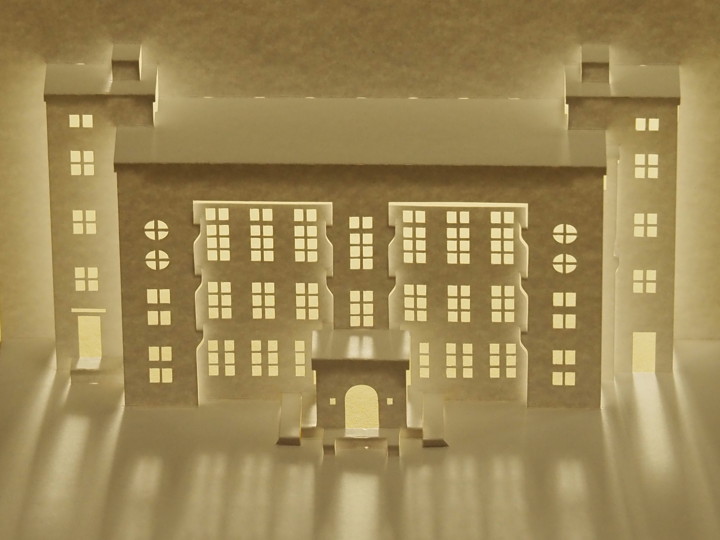
[Reference] (written in Japanese)
“The Great Man in Hokuriku, Mr. Ohwada, Revised and Expanded Edition" (by Shinzaburo Nakayasu / Hinode Newspaper Company, Jigyokudo / 1934)
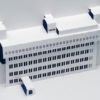
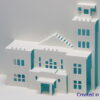
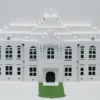
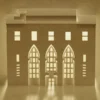
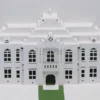
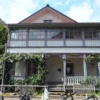
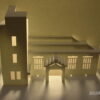
Discussion
New Comments
No comments yet. Be the first one!